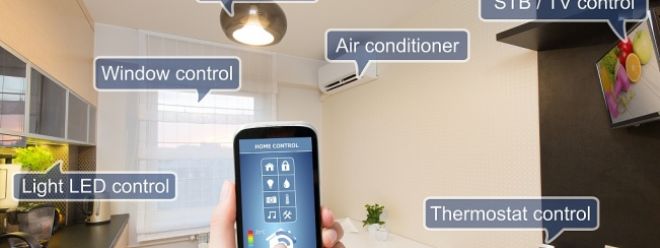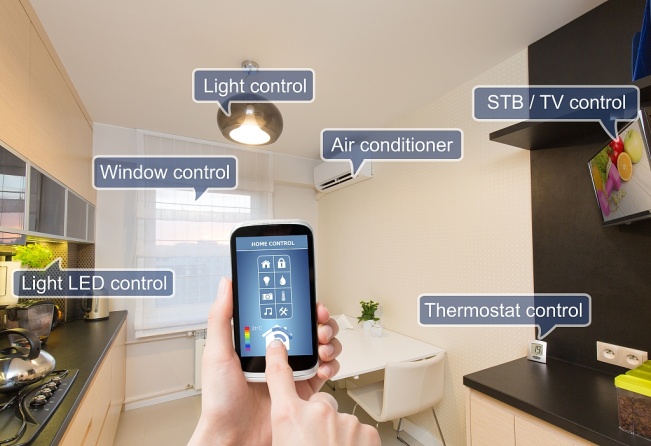What is Zigbee? Why it is important for smart home

What is Zigbee? Why it is important for smart home
Zigbee can transmit data wirelessly within a distance of
about 75 to 100 meters indoors or about 300 meters in the open air, which means
it can easily provide strong and stable coverage in the home.
Smart home connection is not only the familiar technologies
like Wi-Fi and Bluetooth, but also some industry-specific protocols that are
more in line with smart home applications, such as Zigbee, Z-Wave and Thread.

When it comes to home automation, there are various products
on the market that allow you to easily control everything from lighting to
heating. Thanks to the popularity of voice assistants such as Alexa, Google
Assistant, and Siri, you can even ensure that devices from different
manufacturers can work together.
This is due in part to wireless standards such as Zigbee,
Z-Wave and Thread. These standards allow instructions (such as lighting a smart
light bulb of a certain color at a specific time) to be sent to multiple
devices at once, provided that you have a compatible smart home gateway that can
communicate with all your smart home devices.
Unlike Wi-Fi, these smart home standards use only a small
amount of power, which means that many smart home devices can be used without
frequent battery replacement, and some do not need to be replaced even for
several years.
What is Zigbee?
As we have already mentioned, Zigbee is a wireless network
standard whose specifications are maintained and updated by the non-profit
organization Zigbee Alliance (now renamed "Connection Standard
Alliance"), which was established in 2002. More than 400 technology
companies support the standard, including IT giants like Apple, Amazon and
Google, as well as many well-known brands such as Belkin, Huawei, IKEA, Intel,
Qualcomm and Signify.
Zigbee can transmit data wirelessly within a distance of
about 75 to 100 meters indoors or about 300 meters in the open air, which means
it can easily provide strong and stable coverage in the home.
How does Zigbee work?
Zigbee sends commands between smart home devices, such as
from a smart speaker to a light bulb, or from a switch to a light bulb-without
first going through a central control hub, such as a Wi-Fi router. The signal
can also be sent and understood by the receiving device. No matter which
manufacturer produces it. As long as they both support Zigbee, they can
understand the same language.
Zigbee operates on a mesh network, which means that commands
can be sent between devices connected to the same Zigbee network. In theory,
each device acts as a node, receiving and transmitting data to each other
device, helping the further dissemination of instruction data, and the smart
home network can cover a large area.
However, with Wi-Fi, the signal will weaken as the distance
increases, or it may be completely blocked by the thick walls of the old house,
which means that the command may not reach the furthest smart home device at
all.
The mesh structure of the Zigbee network also means that
there is no single point of failure in the network. For example, if your home
is filled with Zigbee compatible smart light bulbs, you may want them to be lit
at the same time. If one of them does not work properly, the grid ensures that
the command will still be able to pass to every other light bulb in the
network.
However, in reality, this may not be the case. Although many
smart home devices that support Zigbee act as repeaters for passing commands
over the network, some devices can send and receive commands but cannot forward
them.
As a general rule, power-powered devices act as repeaters,
broadcasting all the signals they receive from other nodes on the network.
Battery-powered Zigbee devices don't usually do this; instead, they just send
and receive commands.
This is where a Zigbee-enabled hub comes into play, because
it can ensure that commands are relayed to all the correct devices without
relying on the Zigbee grid to pass them on. Some Zigbee products come with
their own hubs, but smart home devices that support Zigbee can also be
connected to third-party hubs that support Zigbee, such as Amazon Echo smart
speakers or Samsung SmartThings hubs, which can solve more problems affordable
and ensure There is no extra equipment in your home.
Is Zigbee better than Wi-Fi and Z-Wave?
Zigbee uses IEEE's 802.15.4 personal area network standard
for communication and runs on 2.4GHz, 90MHz, and 868MHz frequencies. Its data
transfer rate is only 250kB/s, which is much slower than any Wi-Fi network. But
because only a small amount of data is transmitted, the speed of Zigbee is not
important.
The number of devices or nodes that can be connected to a
Zigbee network is limited. But smart home users do not need to worry, because
this number is as high as 65,000 nodes. So, unless you build a truly huge house
somehow, everything should be connected to a Zigbee network.
In contrast, another wireless smart home technology, Z-Wave,
is limited to 232 devices (or nodes) per hub. For this reason, Zigbee provides
better smart home technology, but only if you own a particularly large house
and plan to fill it with more than 232 smart devices.
Z-Wave can transmit data farther, about 100 feet, while the
transmission distance of Zigbee is between 30 and 60 feet, but compared with
Zigbee's 40 to 250 kbps, Z-Wave is slower, and the data transmission speed is
10 per second. To 100 KB. They are all much slower than Wi-Fi, which is
measured in megabits per second and can transmit data between approximately 150
to 300 feet, depending on obstacles.
Which smart home products support Zigbee?
Zigbee may not be as common as Wi-Fi, but it is also used in
an astonishing number of products; the Connectivity Standards Alliance has more
than 400 members from 35 countries. The alliance also stated that there are
currently more than 2500 Zigbee certified products and more than 300 million
units have been produced so far.
In many cases, Zigbee is a technology that runs quietly in
the background of a smart home. You may have installed the Philips Hue smart
lighting system controlled by Hue Bridge, but you don’t know that the wireless
technology that powers it is Zigbee. This part is the focus of standards such
as Zigbee (and Z-Wave), because they just continue to work without you having
to configure them like Wi-Fi.